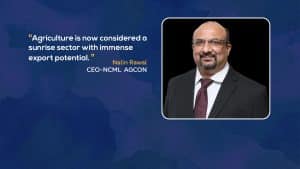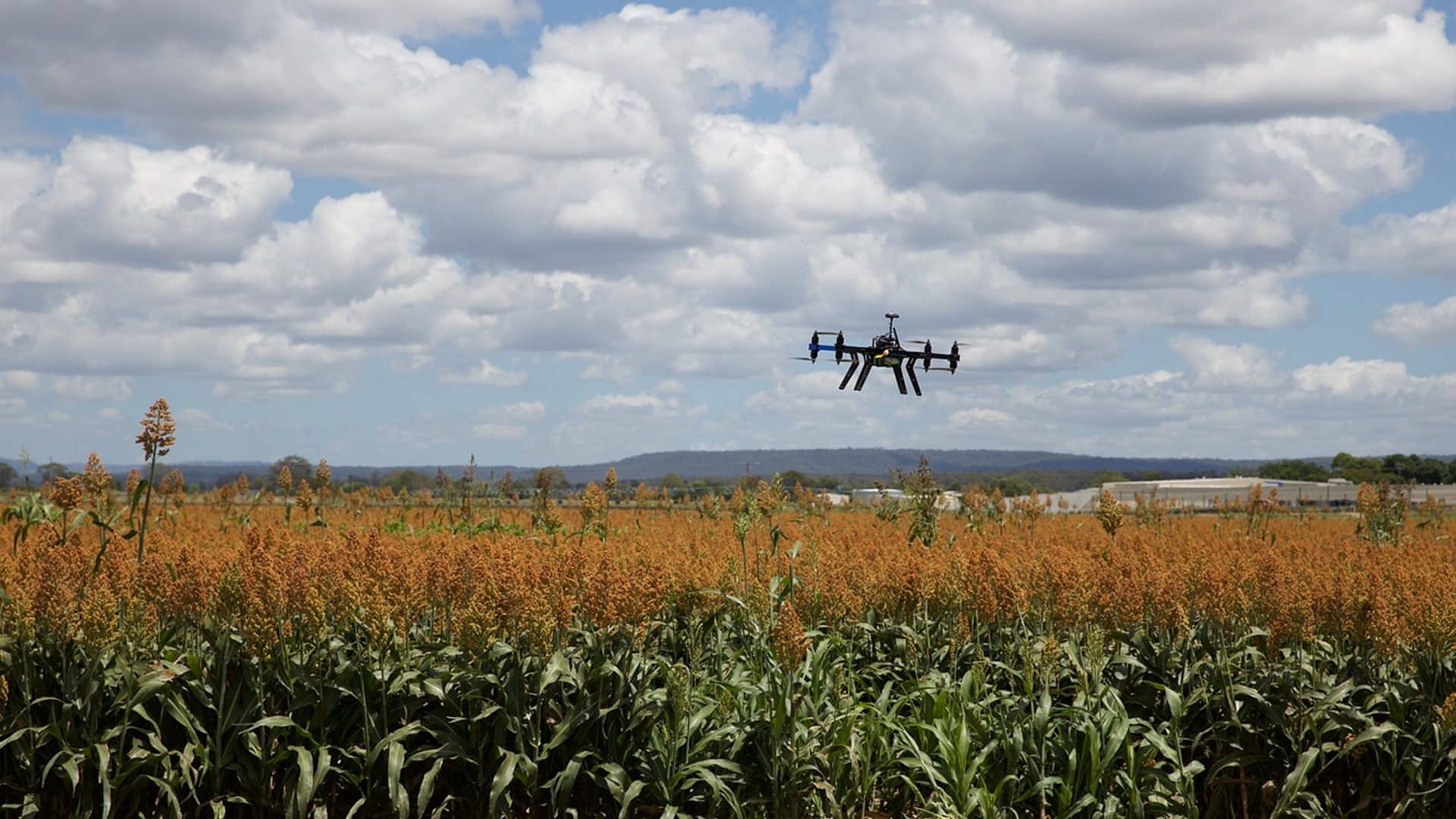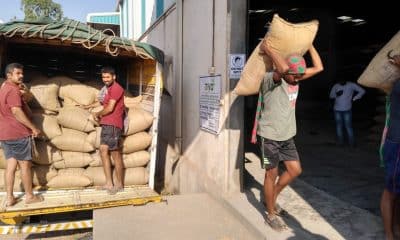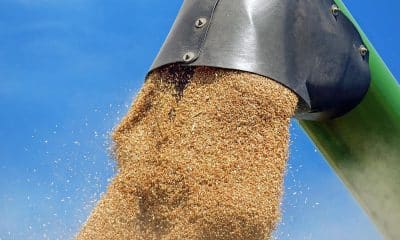Agriculture
New age-tech changing the face of Indian agriculture: NCML Agcon CEO Nalin Rawal
New and emerging technologies such as IoT, big data, remote sensing, AI and ML are playing a transformative role in converting traditional agriculture into data-driven precision farming, says Mr Nalin Rawal, CEO of NCML AGCON, one of India’s largest integrated weather, agri & commodity risk management company.
Rawal underscored that Indian agriculture has grown beyond merely meeting food needs of the country and said it is widely seen as a sunrise sector with the industry players betting high on its export potential.
Mr Rawal tells The Plunge Daily about the key challenges faced by agri-sector, emerging tech trends and the growing significance of agritech industry in a post covid world.
Q1: It’s probably the first time the budget focused on leveraging the agri-tech ecosystem through the PPP mode to benefit farmers. What are your takeaways from this year’s budget in terms of its agenda for the agricultural sector?
A: In our opinion, this year’s budget clearly depicts Government’s intention and focus towards augmenting the infrastructure and adoption of tech-enabled services in the agriculture sector. Leveraging technology via PPP mode in providing hi-tech services to the farmers will definitely help in improving and scaling the agri value chains, bringing in more transparency and help Indian farmers reap the benefits of technological advancements. The impetus on increasing farmer’s digital presence via shift to tech enabled services and logistics and focus towards empowering small and marginal farmers with the support of new age agtech players, we think that agriculture sector can be seen as a sunrise sector and has a bright future in the coming years. We compliment the Government for taking this remarkable initiative which will act as a game changer for the Agtech sector.
Q2: The pandemic has hastened the tech adoption process in agri-sector. What, according to you, are the key technology trends that will play a key role in 2022 and beyond?
A: COVID-19 pandemic has hit all the sectors of the economy very hard. We are still recovering from its after effects but the resilience and growth displayed by agriculture sector in India even during this period has set an excellent example of how challenges can be converted into opportunities. This is the result of domain specific advancements in the sector. Also, the advancements in the technologies have addressed the value chain concerns to some extent. New and emerging technologies such as IoT, drones, mobility, cloud computing, big data, remote sensing, AI, ML, image analytics and processing, tech-based cold chain and logistics in agriculture and agri bots are playing a transformative role in converting traditional agriculture into data-driven precision farming for generating sustainable profits and thus holds the utmost importance today and in the coming years.
Also Read: This startup is making waves in feminine hygiene segment with its sustainable products
Q3: A 2020 study by Ernst & Young placed the Indian agritech market potential at $24 billion by 2025. Last year, the agritech space received around USD 2 billion in funding. How do you see India’s agritech landscape evolving in coming years?
A: Year 2021 has been a remarkable year for the Indian Agtechs. The investments gathered momentum despite the pandemic, with the participation of many new investors from the seed stage to late stage. The Indian Agtech sector offers such an innovative and accessible solutions to the problems faced by farmers and is entering into next phase driven by increasing adoption of tech by the farmers & Govt support. India’s agritech market has significant runway for growth given the emergence of digital solutions coupled with the large base of agriculture sector. We are hopeful that India will have more than 10,000+ sustainable start-ups in the next 5–10 years. It’s amazing and pretty much encouraging that many such start-ups have been founded by the sons and daughters of farmers who understands the ground reality, making the ecosystem more inclusive.
Q4: AGCON provides innovative Risk Management & Business solutions in crop, commodity and agribusiness space. Tell us more about your services and how it benefits farmers.
A: AGCON has an operational presence in 28 states & 2 union territories, providing technology led agri research, consultancy and advisory services to clients. We are having pan India network of 4500+ automated weather stations, in-house GIS & remote sensing and data analytics team developing crop risk monitoring reports for both Kharif and Rabi season on fortnightly and monthly basis. Also, we have an integrated price and market intelligence network in 2500+ mandis across India under which we monitor prices of 340 commodities, providing services to banks and other value chain participants. AGCON is having strong client base including global trading companies, govt companies etc.
We provide technology led solutions in weather, Crop risk management through remote sensing based acreage estimation, satellite based crop monitoring & production forecasting. We also provide commodity price risk solutions through short, medium and long term price forecasting for different agri commodities thereby helping different stakeholders in mitigating the climate, crop and price risks, thereby benefitting farmers to generate sufficient profits and increased income.

Q5: Centre is working on a digital ‘stack’ of agricultural datasets, with its core as land records. It aims to create a unique farmer identity number for each farmer and provide a centralized multi-layer agricultural information system. How can agtech benefit from this ecosystem?
A: We believe that the aim of “AgriStack” is to ensure that farmers take informed decisions on what crops to grow and when, which seeds to buy, and how to maximize yield. This system will provide players in the agricultural supply chain to precisely plan their production and logistics activities. This will further help farmers in deciding their crop for cultivation, managing the crop in field, when to sell their produce, where and at what price; and also farmers can benefit from new technologies and data protection. The overall objective is to move India towards precision farming. In this regard, AgriStack that can bring all stakeholders in the agri-value chain on a common platform which will be a game changer for the agritech ecosystem.
Q6: In 2016, the government introduced eNAM (National Agriculture Market) to facilitate online trading of commodities for farmers but it has not gained a lot of traction. There are already e-commerce marketplaces run by private players but they are evolving. Do you think these platforms have the potential to steer the shift towards demand driven digital markets from the existing mandi system?
A: As far as e-commerce is concerned, private players especially in the agriculture space has evolved exceptionally well. For instance, NCML’s MktYard.com, an online pan India integrated network is helping commodity market participants to buy or sell commodities without hassle. The platform offers wide array of services like forward/reverse e-auctions, partial e-auctions, e-procurement, and the segment first order matching based buying/selling of both agri and non-agri commodities. Other e-commerce players are also continuously developing and finding out innovative ways to address the emerging demands of the stakeholders. The benefits of privately run electronic markets includes lower cost due to competition, incentives to innovate and attract volumes pushing the National and Unified Market goals, high visibility to government on prices, volumes and stocks. Thus, these platforms have developed a sense of trust among the stakeholders and holds tremendous potential in making this arena demand-driven from the existing mandi system.
Also Read: This fintech startup is changing the game in India’s microlending space
Q7: As much as 67 percent of India’s farmland is held by the marginal farmers with holdings below one hectare. Average daily income of a farmer from cultivation in 2018-19 was Rs 27 per day, according to the latest Situation Assessment Survey (SAS). This means the cost of availing modern tech is beyond their reach. How can technology support them who are most at risk of being left behind?
A: Agreed, as most of the farmers in India are marginal, it is difficult for them to avail modern tech. This is the reason that there still exists the untapped potential as far as tech adoption among farmers is being considered. This challenge can be addressed by adopting a holistic framework such as thematic and institutional partnerships among the stakeholders, subsidies to the farmers via DBT route, promising Govt schemes incentivizing farmers and adoption of “rental model” for reducing the capex requirements. Thematic partnerships between the Corporate-Agtech-FPO-MSME can help in achieving economies of scale and making adoption of tech financially viable for farmers. It is important that large corporates collaborate with agri start-ups/FPOs to support and conduct pilot based projects, thereby leveraging technology solutions that focus on bringing down the cost and increasing produce for farmers.
Q8: In India, the farm sector accounts for 15% of the total carbon emissions (per year). Please share the role of technology in reducing greenhouse emission (from agriculture).
A: Greenhouse gas emission is not only a national issue, but it is a challenge faced globally. Methane released from agricultural activities and food systems is the main source of greenhouse gases. The recently held Glasgow COP26 and India’s commitment to step up efforts to curb emissions in agriculture sector clearly states the vision for sustainable farm practices. For converting this vision into reality, technology plays a prominent role. Study reports have shown that soil testing of over 100 million samples have promoted less-carbon-intensive agriculture by rebalancing the use of crop nutrients, such as nitrogenous fertilizers. Also, Agri Research Institutes have found that adoption of Direct Seeded Rice method decreases the water usage and lead to cutting farming emissions. Hence, improved tech-enabled water management system in rice irrigation, efficient use of fertilizer, adoption of zero-tillage and better livestock can surely help in addressing this issue.
Q9: Experts call agtech as humanity’s best bet for a sustainable agrarian economy. Your views? Does Agcon also share a vision for sustainability in Indian agriculture?
A: Definitely, today Indian agriculture is beyond merely meeting our food needs, it plays a key role in the growth of the Indian economy contributing approx 15% in India’s GDP. The sector is not only considered to be a sunrise opportunity for the industry players but also holds immense export potential. However, there are few challenges which still persists such as lack of access to credit, fragmented land, depleting groundwater table and many more. We believe this is where agtech can act as a catalyst and transform the face of Indian agriculture. From farm management, data analytics, to input and output marketplaces and agri financing, Agtech has a lot of avenues to explore, all of which are critical to small and marginal farmers. We at AGCON also share similar vision by providing cutting edge consulting and advisory services via AWS, crop monitoring solutions and many more. Creating farmer centric solutions is the key to achieve sustainable development. It will be a win-win opportunity for all the stakeholders of the industry if we focus on increasing the capacity of our farmers, ensuring them livelihood and that too without disturbing the natural ecosystem of our planet.











































Pingback: Live video & audio calling app Dyte raises USD 11.6 mn from Unbound, Sequoia, Nexus Venture
Pingback: How Arya.ag's post harvest solutions have empowered lakhs of Indian farmers
Pingback: Commerce min tightens norms to check wheat export by corrupt traders